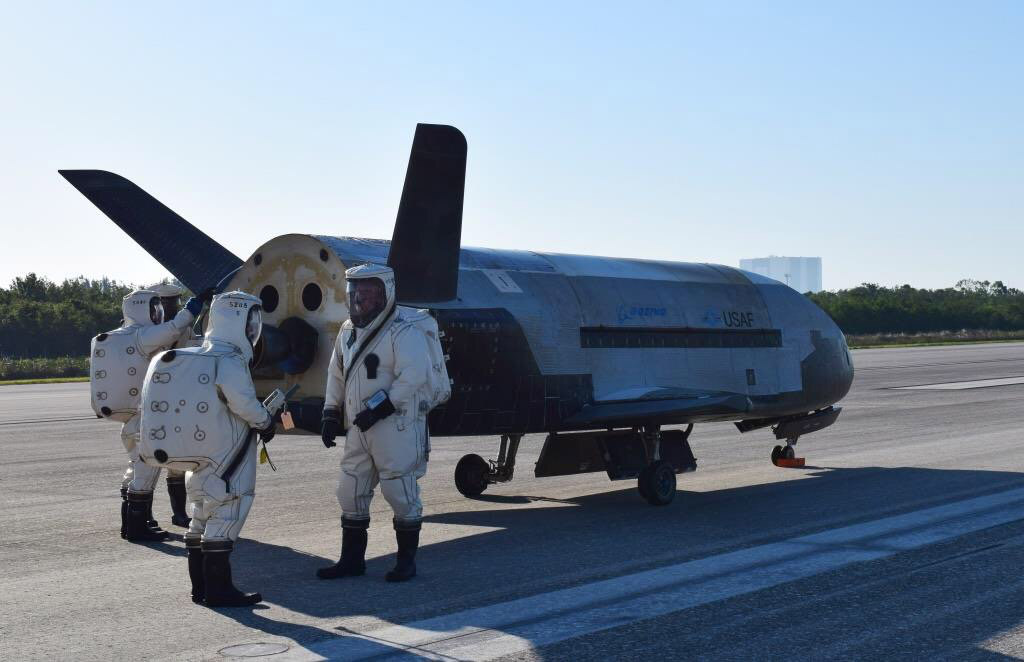First off, it's absolutely an engine nozzle. Some sources say X-37B has a storable biprop propulsion system with ~900N thrust. The Aerojet R-42 is such an engine and the dimensions look about right -- 24" long bell with 15" exit diameter. This engine uses MMH and NTO as propellants, which are toxic, requiring the use of hazmat suits by ground crew.
The X-37's propulsion system is used for orbital maneuvering and the de-orbit burn only; it rides a two-stage Atlas launcher to orbit, and glides to landing like the space shuttle.
For an engine only used in space, it's not necessary that it be mounted on the mass centerline of the spacecraft. As long as the engine can thrust directly through the center of mass, it can accelerate the craft without producing unwanted torque. Since the spacecraft will carry a wide variety of possibly-asymmetrical payloads, it likely needs a gimbaling engine anyway, so mounting it off-center with a small "toe-in" angle works as well as putting it on the centerline.
I don't know what drove the off-center placement of the engine in the development of the X-37, but the Boeing document X-37 Storable Propulsion System Design and Operations shows a symmetrically mounted pair of 450N engines instead of the single. That would point toward the earlier design using the Aerojet R-4, and:
A pair of R-4s replaced by a single R-42, giving about the same total thrust, with minimal changes to the mounting, or
A pair of R-4s replaced by a single R-4 with a larger bell -- the 300:1 expansion ratio nozzle for the R-4 is about the same size as the 160:1 nozzle for the R-42, and yields substantially better specific impulse.
I would assume the two-engine layout already had the mountings toed-in by a couple of degrees to minimize off-center thrust if one of the engines failed.
Alternately, since the spacecraft is intended for propulsion tests (among other things), offsetting the engine allows a test-subject propulsion unit to be placed closer to centerline than would be possible if the primary propulsion unit were centered.
Some illustrations show an asymmetrical solar array deployed on the left side of the spacecraft, but I don't think that's relevant because (a) it would move CoM to the left when deployed, and the engine is on the right, (b) the solar array would likely be retracted when firing for de-orbit, and (c) the illustrations that show the asymmetric solar array also show a centered engine.



